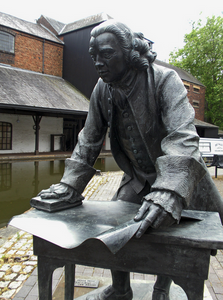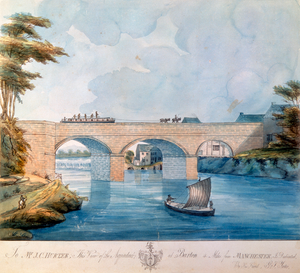
GUEST POST from Arlen Meyers
Sickcare is a culture of conformity and competition. Premeds know it. Medical students and residents learn it. But, once they graduate, they are told they will be paid for value. Unfortunately, few will teach them how to do it and reconcile the culture of conformity and competition with an innovative culture of creativity, collaboration and interprofessional communication.
We should be thankful that we are starting to see some cracks in the armor.
Here are some ways to balance the two mindsets:
- Start with higher education reform To prepare students for a post-Covid future, colleges and universities need to double down on preparing them for digital jobs. But even teaching platform skills aren’t enough. Few employers are interested in hiring candidates who’ve just completed a training program, they’re looking for relevant work experience. The good news is that there are two promising models for colleges to go beyond the traditional career services function to provide students with relevant digital training and work experience.
- Overcome the fallacies about creativity. To avoid premature closure, teams should arrive at an “almost final” decision and then intentionally delay action in favor of additional incubation time. During this time, everyone should commit to thinking about the problem and sharing their ideas. If the team can’t find a better approach during the incubation period, they should proceed with their original solution. Leaders can improve group creativity by paying close attention to how ideas are discussed in diverse group settings. They should encourage team members to build on each other’s ideas instead of pushing individual ideas. This doesn’t mean that ideas should be accepted blindly when they contain flaws; instead, they should approach ideas with an open mind to acknowledge useful aspects and improve weaknesses using plussing or the similar “yes, but, and” approach. To promote more creative ideas, leaders should utilize simple tools to capture individual ideas before they are opened to the whole group. Group discussions should be conducted asynchronously, where team members look at each other’s ideas and use them to refine and create new ideas. If done remotely, leaders should find other ways to bring the team together to bond and build trust with each other
- Teach creativity and entrepreneurship in medical school and residencies. Here is something so you don’t have to do reinvent the wheel.
- Rethink how we recruit and accept medical students Medical education is not alone, as noted in a recent HBR article describing how Goldman Sachs changed how they recruited new hires. Perhaps it is time for medical schools to adopt three new ways of recruiting and accepting medical students.
- Give medical students the opportunity to get experience working in a more creative culture as part of an internship or rotation.
6.Train the trainers. Provide faculty with the knowledge, skills, abilties and competencies they need to integrate creativity, innovation and entrepreneurship as part of their basic science and clinical rotations. But, what should an introduction to entrepreneurship teaching and learning include for basic science and clinical faculty who do not have innovation and entrepreneurship domain expertise include?
The learning objective of the module should be to know how to integrate healthcare innovation and entrepreneurship topics into basic science courses and clinical rotations by challenging students with case based, problem based and project based learning in real world settings and applications to help them perfect sickcare entrepreneurial knowledge, skills, attitudes and competencies.
7. Let medical students and residents take a gap year to learn how to create and sell something. Over half of medical schools already have an arrangement whereby students can take a one year leave of absence. But they call it something other than a gap year. They call it getting an MBA. Or, offer them a fellowship in entrepreneurship and innovation.
9. Hire leaderpreneurs to become department chairs and deans. Rethink the triple threat.
10. Give medical students and residents an exit ramp. The next phase of medical school education reform is in progress. One question medical educators and Deans will have to address is, “What business are we in?” Are you in the business of graduating doctors who will only take care of patients directly, or, are you in the business of creating opportunities for graduates to pursue biomedical careers of their choice, including non-clinical careers that do not involve seeing patients face to face for a significant part of their working life? Patients are not the only stakeholders that have a dog in the sickcare hunt.
11. Teach philanthropreneurship Philanthropreneurship has four elements. First, the driving force must be a passion to make life better for others, especially those who are underprivileged. Second, there has to be an element of giving, whether this is in terms of money or time. Third, there needs to be creativity, the envisioning of novel approaches to solving problems. And finally, philanthropreneurship requires leadership and strategic thinking– directing, organizing, and influencing the efforts of others.
12. Destroy your innovation silos Sick care badly needs innovation if it is to become healthcare . Yet, it’s questionable whether it can be fixed from inside. Despite the popularity of open innovation and community based, participatory innovation networks, healthcare organizations and doctors seem to shun outside ideas and collaboration and are perceived as arrogant know-it-alls, stuck in the ivory tower or healthcare city , when it comes to knowing what’s best for patients. They have a silo mindset that blocks collaboration with other stakeholders in the innovation supply chain. The challenge for most organizations is to create and engage stakeholders.
Innovation starts with mindset. The clinical mindset is different from the entrepreneurial mindset and the ethics of medicine are different from the ethics of business. We need to give experience, educate and train doctors who can reconcile the two. Thankfully, it is starting to happen and it will make better doctors.
![]() Sign up here to get Human-Centered Change & Innovation Weekly delivered to your inbox every week.
Sign up here to get Human-Centered Change & Innovation Weekly delivered to your inbox every week.








 Now that I’ve got your attention, let’s talk about homosexuality and whether it has any impact on innovation. There probably are two no more polarizing topics in the United States than homosexuality and abortion. But the truth is that if both sides of the political and religious spectrum focused on the
Now that I’ve got your attention, let’s talk about homosexuality and whether it has any impact on innovation. There probably are two no more polarizing topics in the United States than homosexuality and abortion. But the truth is that if both sides of the political and religious spectrum focused on the 
